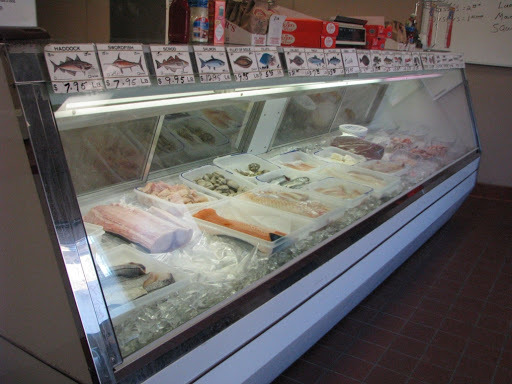#retail logistics and distribution
Explore tagged Tumblr posts
Text
Making Distribution and Logistics Services More Efficient for Publishers with 7Search PPC

Introduction
Effective logistics and distribution services are essential for publishers to reach their target audience and maximize their success in the ever-changing publishing sector. Pay-Per-Click (PPC) advertising from 7Search PPC is one such method that is gaining traction. Publishers may increase their reach, optimize campaigns, and boost conversion rates by incorporating PPC into their logistics and distribution plans. We'll go into the value of logistics and distribution services for publishers in this blog article, as well as examine 7Search PPC's advantages and talk about how it may help publishers in the market today.
The Value of Distribution and Logistics to Publishers
For publishers, reaching the proper audience with their material in an efficient manner is essential to their success. Timely delivery and accessibility of published information are greatly aided by effective logistics and distribution services. These services include order processing, warehousing, transportation, and inventory management. Publishers may streamline their operations, cut expenses, and retain customer happiness by collaborating with reputable logistics companies. However, even the best publications risk being overlooked without a targeted marketing strategy.
To improve logistics and distribution, use 7Search PPC.
Publishers have access to a priceless tool through 7Search PPC to enhance their distribution and logistical efforts. Publishers can place bids on precise keywords associated with their publications via PPC advertising. The publisher's advertising is prominently displayed in search engine results when visitors use these keywords, resulting in targeted traffic to their website. Publishers who use 7Search PPC in their logistics and distribution plans can take advantage of the following advantages:
Increased visibility: PPC advertising help publishers reach a bigger audience and make sure that potential readers who are actively looking for relevant material discover their articles.
Targeting with precision: To increase the likelihood of conversions and engagement, publishers can accurately target their audience based on demographics, location, and search intent.
Cost-effective strategy: 7Search PPC is a cost-effective marketing technique because publishers only pay when their advertisements are clicked. Furthermore, the option to set budget ceilings enables publishers to keep tabs on their advertising costs.
Real-time data: Publishers may get comprehensive statistics from 7Search PPC, including information on click-through rates, conversion rates, and keyword performance. Publishers can improve their campaigns, hone their tactics, and more efficiently deploy money thanks to this information.
Enhanced brand awareness: Publishers can raise their brand's visibility in search results, which will help build recognition and trust with their target market.
Conclusion
Distribution and logistics services are essential for success in the cutthroat world of publishing. Publishers who use 7Search PPC can increase distribution and logistical efforts, effectively reaching their target audience, and boosting engagement. Publishers have the skills to optimize their marketing campaigns thanks to 7Search PPC's advantages, which include improved brand recognition, cost-effectiveness, accurate targeting, and better visibility. Publishers must modify their strategy as the publishing industry changes and use cutting-edge tools like 7Search PPC to stay on top of the game. Publishers may strengthen their brand, increase their readership, and succeed in the digital era by incorporating PPC advertising into their logistics and distribution services.
#logistics and distribution company#logistics and distribution#logistics and distribution services#logistics and distribution software#logistics and distribution companies#top logistics and distribution companies in usa#logistics and distribution institute#logistics and distribution industry#westset logistics and distribution#retail logistics and distribution#logistics and distribution platform
0 notes
Text

We are working with H.N White. H.N. White offers a curated selection of handmade ties, overshirts, knitwear and accessories for men. H.N. White ties are handmade in England from the finest fabrics.
#distribution#warehousing#order fulfilment#mensfashion#ecommerce#worldwide shipping#storage#logistics#reverselogistics#pick and pack#mensaccessories#b2c#b2b#exporting#brexit#luxury retail#retail#fulfilment partner#fulfilment house
3 notes
·
View notes
Text
Economic Bounce Back & Busy Trade Lanes
New Kids on the Block: Emerging Trade Routes Geopolitical Musical Chairs: The world map of trade is getting a fresh paint job. Thanks to some geopolitical shuffle, places like Canada, America and India are turning into hotspots for trade. This shake-up is making freight companies rethink their game plans and routes.
Digital Swagger: The Freight Forwarding Tech Revolution With the economic landscape shifting, freight forwarders are all over digital tools. These tech solutions are game-changers, making operations smoother, adapting to market swings, and boosting customer satisfaction. Gone are the days of paper overload and headaches over manual tracking. Now, it’s all about slick, all-in-one systems that offer live tracking, automated paperwork, and smart analytics to keep businesses on their toes.
Green is the New Black: Eco-Friendly Shipping Eco Push: Everyone’s riding the green wave, and the shipping industry is no exception. Thanks to both carrot and stick approaches (think incentives and tough rules), shipping companies are moving towards cleaner, greener options like eco-friendly vessels and alternative fuels.
Rise of the Underdogs & Decentralization The global economy is less about the usual heavyweights and more about rising stars like Vietnam and India, reshaping the freight demand and flow. Plus, tech is levelling the playing field, enabling smaller companies to duke it out with the big dogs by offering top-notch service and efficiency.
Setting Sail: The Shift to Ocean Freight & Tech Tools With folks leaning into environmental concerns and wallet-friendly options, ocean freight is getting more attention. This has spiked the demand for ocean-specific freight software that makes maritime shipping smarter and smoother.
AI on Board: Smarter Ocean Freight Ocean freight’s getting a brain boost with AI. Think of AI as the new captain, helping predict delays, navigate the weather, and even cut down on fuel use. This isn’t just about keeping shipments on track; it’s about making them smarter and more cost-effective.
Better Together: Enhanced Collaboration Through Digital Platforms In today’s global village, smooth teamwork across borders is key. Modern freight systems are making it easier for everyone involved in shipping to stay on the same page. By sharing info and syncing up, these digital platforms are knitting a tight-knit shipping community.
Tailor-Made Tech: Custom Freight Solutions Just like no two people are the same, businesses have unique shipping needs. Enter custom freight platforms, offering services you can mix and match to fit your specific needs, from picking the best routes to managing your stockpile.
Economic Guard Dogs: Navigating Protectionism Some places are throwing up trade barriers to protect their turf, which can be a headache for the freight world. The antidote? Smart freight platforms that can weave through these regulatory mazes.
E-commerce Explosion & the Last-Mile Hustle The e-commerce boom is reshaping retail, cranking up the pressure for quicker, slicker last-mile deliveries. Freight systems that can click with e-commerce setups and give live updates are winning big.
Flexibility & Resilience: More Than Buzzwords The twists and turns of 2024’s economic rollercoaster highlight just how crucial it is for freight companies to stay nimble and resilient. Those ready to leverage tech, green up their act, and keep a global perspective are set to ride high.
So, there you have it: 2024’s freight forwarding landscape in a nutshell. It’s all about being tech-savvy, eco-conscious, and ready to adapt to the global beat. With the right tools and attitude, the future looks bright for the freight world.
#global used clothing shipping#used clothing logistics#logistics solutions for metal scrap#transport services for mining & minerals industry#scrap metal shipping company#freight forwarder mississauga#mining logistics companies#International freight forwarding industry#heavy machinery shipping#International freight forwarders Canada#global freight solutions#international logistic services#global shipping company#logistics company in canada#car parts shipping#heavy machinery transportation#Trucking Heavy Haul Services#ocean freight forwarders#sea freight forwarder#ocean frieght services#lcl freight canada#fcl freight canada#LCL Shipping Canada#Warehosing & Distribution services#wholesale and retail distribution
1 note
·
View note
Text
Vietnam Logistics Market Flourishes: CEP and Warehousing Sector Generate over USD 5 Bn in 2022, Fueled by Joint Ventures and Modern Warehousing Systems. What Awaits the Future? :Ken Research
Buy Now
1.Emerging Trends and Developments in Vietnam's Warehousing Market: Joint Ventures, Automation, GSP Warehouse Preference, and Recent Funding Surge.

Interested to Know More about this Report, Request for a sample report
Logos Property and Manulife Investment Management joined forces in 2022 to construct an advanced logistics factory, covering an area of over 116,000 sqm and valued over $80 Mn. Moreover, GLP entered the Vietnamese market through a $1.5 Bn joint venture with SLP.
E-commerce companies are utilizing AI-powered warehouses and sorting centers spanning 0.3 Mn sqm to decrease delivery time during peak periods. Tiki NOW Smart Logistics has integrated robots for task execution, enhancing warehouse efficiency and enabling sellers to save 30% - 40% in costs.
Investment in pharmaceutical storage systems or GSP warehouses is increasing in Vietnam, with foreign firms such as DKSH, Zuellig, and Mega making substantial investments to improve cost-efficiency and optimize manpower in warehouses.
Vietnamese on-demand warehousing platform, Wareflex, secured $785,000 in pre-seed funding from Genesia Ventures and Antler. Additionally, Mirae Asset Daewoo Co. and Naver Corporation, prominent South Korean companies, invested $37 Mn in a warehouse located in Bac Ninh, Vietnam.
2.Automation Surge: Vietnam's Growing Demand for Modern Warehouses Driven by Increased Investment in New Technologies.

Visit this Link :- Request for custom report
Next generation supply chains in Vietnam are utilizing robotics and automation to perform task such as picking, sorting, inspecting, handling to improve overall efficiency and speed to market. Some warehouses are turning to autonomous vehicles to bring merchandise to sortation while Drones & RFID will be used for Inventory Management. The opportunities seem endless which will result in greater efficiency and productivity.
3.Tech Trends Unleashed: Big Data and Augmented Reality Empower Vietnam's CEP Market in Response to Consumer Demand.

Market Maxomony
Vietnam Logistics Market Segmentation
By Service Mix
Freight Forwarding
Warehousing
CEP
Value Added Services
Vietnam Freight Forwarding Market Segmentation
By Mode of Freight
Road Freight
Sea Freight
Air Freight
By Type of Freight
International Freight
Domestic Freight
By Types of Operators
Small Fleet Operator (SFO)
Medium Fleet Operator (MFO)
Large Fleet Operator (LFO)
By End-User
Retail
Oil and Gas
Textiles
Pharma
Others
Vietnam Warehousing Market Segmentation
By Warehousing Types
General/Industrial/Retail
CFS/ICD
Cold Storage
Agriculture and Others
By Warehouse Locations
Northern
Central
Southern
By End-User
Retail
Oil and Gas
Textiles
Pharma
Others
Request a Call with Expert to know more about Latest Trends
Major Players Mentioned in the Report:
Yusen Logistics
Transimex
Gemadept Corporation
Maersk
Kuehne+Nagel
MP Logistics
ITL
Vietnam Post
Viettel Post
Vietnam Maritime Corporation
Expeditors
Bee Logistics
DB Schenker
Vinafrieght Joint Stock Company
CJ Gemadept
Ceva Logistics
GHN Express
DHL VNPL Express
EMS
Key Target Audience
E-Commerce Companies
Third-Party Logistic Providers
Potential Market Entrants
Freight Forwarding Companies
Warehousing Companies
Cold Storage Companies
Industry Associations
Consulting Agencies
Government Bodies & Regulating Authorities
Time Period Captured in the Report:
Historical Period: 2017-2022
Base Year: 2022
Forecast Period: 2022-2027
For More Insights On Market Intelligence, Refer to the Link Below: –
Vietnam Logistics Market Outlook to 2027
Related Reports by Ken Research: –
Indonesia Logistics Market Outlook to 2027
#Vietnam Supply Chain Industry#Vietnam Logistics Market#Warehousing Industry Vietnam#Delivery Services Sector Vietnam#Vietnam Freight Forwarding Business#Inventory Distribution Industry Vietnam#Vietnam Transportation Market#Logistics Sector Vietnam#Number of Shipping Fleets in Vietnam#Number of Sea Ports in Vietnam#Number of Truck Fleets in Vietnam#Number of Warehouses in Vietnam#Vietnam Freight Forwarding Services Market#Logistics Services Industry Vietnam#Vietnam CEP Services Sector#Value Added Services Division Vietnam#Vietnam Road Freight Market#Sea Freight Industry Vietnam#Vietnam Air Freight Sector#Retail Logistics Division Vietnam#Oil Shipping Market Vietnam#Vietnam Gas Transport Industry#Pharma Warehousing Sector Vietnam#Industrial Delivery Services Sector Vietnam#Vietnam Retail Warehouses Market#CFS Warehouses Industry Vietnam#Vietnam ICD Warehouses Division#Cold Storage Warehouses Sector Vietnam#Vietnam Agriculture Warehouses Market#Vietnam International Logistics Shipments
0 notes
Photo

Supply chain management (SCM) is the process of planning, implementing, and controlling the flow of goods, services, and information from suppliers to customers. It involves the coordination and integration of all the activities required to move a product or service from the manufacturer or supplier to the end consumer. This can include procurement, production, transportation, warehousing, and distribution.
The goal of SCM is to ensure that the right products or services are produced and delivered to the right place at the right time and at the lowest possible cost. To achieve this goal, SCM employs a variety of tools and techniques such as:
Demand forecasting: Predicts future customer demand for products or services.
Production planning: Determines the most efficient way to produce a product or service, taking into account factors such as available resources, equipment, and capacity.
Inventory management: Helps organizations maintain an appropriate level of stock to meet customer demand while minimizing costs.
Logistics management: Coordinates the movement of goods and services from one location to another, including transportation, warehousing, and distribution.
Sourcing: Identifies and evaluates suppliers and partners to help organizations find the best products and services at the best prices.
Supply chain collaboration and integration: Involves working closely with suppliers, partners, and other organizations to improve efficiency and effectiveness throughout the entire supply chain.
Supply Chain Visibility: To have real-time visibility of products, materials, and information flow across all stages of the supply chain process
SCM is a critical function for organizations in all industries, as it has a direct impact on a company's ability to compete effectively and satisfy customer demand. With the help of technology such as cloud computing, data analytics, and artificial intelligence, companies are able to integrate and optimize all aspects of their supply chain, from sourcing raw materials to delivering finished products to customers.
SCM is a dynamic field, continuously evolving due to changing market conditions, global competition, advances in technology, and shifting customer preferences. It also has a big impact on sustainability and companies are looking for ways to optimize their supply chain to reduce their environmental impact and operate more sustainably.
#Supply Chain management#Retail services#warehouse and distribution uk#logistics and distribution services#warehousing services uk#kitting and packaging services
0 notes
Note
I saw your post about ingram, and out of curiosity, is there some advantage to going through the whole self-publishing thing with retailers when you're just starting out? like I mean the way that fandom zines work is that they don't even bother going through ingram or amazon or whatever. they just set up a social media site (usually twitter) to gain followers, open preorders (usually 1-2 months in length) to generate the costs of printing upfront, and then sell anywhere from a few dozen to several hundred copies of their books (usually artbooks, but anthologies exist too). I've seen some zines generate over a thousand orders. they're kind of like pop-up shops, except for books. maybe the sales numbers aren't so impressive to a real author, but the profit generated is typically waaaay more than the $75+ apparently needed for Ingram Spark, so I still feel like new authors could benefit from this method too, especially if they just need some start-up cash to eventually move to ingram if they want to for subsequent runs of their book. I think authors would also have to set aside some of the pre-order money to buy an ISBN number to have printed on their book, and I'm not really sure what other differences there are, but I just wanted to ask about it in case there's some huge disadvantage I'm missing!
So, popup zines work well for some people, and I know some authors who kickstart their work successfully. But for a lot, it's just not feasible as a long-term stratedy. Or even as a means to get off the ground.
Fanzines succeed primarily because an existing fanbase is willing and ready to throw money at something they love. They’ve got a favorite writer or artist they want to support. Supporting all the others is just a happy by-product. They also take a HUGE amount of short-term but intense planning that just doesn’t always jive with how some of us work.
I, for one, would never offer to organize a fanzine. I’ll take part in them as a creator, but I’d rather throw myself off a cliff than subject myself to wrangling that many people and dealing with the legal logistics.
When it comes to authors doing anthologies, it'svery much the same. The success of the funding often hinges on having other big-name authors involved whose existing fans will prop up the project. Or having a huge marketing budget.
Most self-pub authors have zero marketing budget. I’m one of them, and I’m under no illusions that my work would not be as popular and self-sustaining as it is if I didn’t have a large Tumblr blog.
When I thank Tumblr in my forewards, I am utterly sincere. Tumblr brought fandom levels of enthusiasm to an unknown work and broke the Amazon algorithm so hard, that Amazon thought I was bot sniping my way to multiple #1 spots and froze my sales rankings.
That’s not the norm. And while I could probably kickstart my own work as an indie creator, that’s because I’ve put literal decades into building up a readership. I’ve been doing this since I was 16 and realized people thought I was funny. I didn’t know what to do with it or if I’d ever actually write anything, but it meant the groundwork was already there (thank you, past-me). I basically fell upward into my success by virtue of never being able to shut the fuck up and wanting to make people laugh. Clown instincts too strong.
New or first-time authors trying to sell their work without that will find it infinitely harder.
All of that aside, even if an unknown author somehow gets lucky and manages to fund their work, there’s still the question of shipping and distribution logistics. Are you shipping everything yourself? Better hope you’re able-bodied and have the time for it. (for reference, it took me months to ship out 300 patreon hardbacks because of my disabilites. It damaged my back and hands. I couldn’t type for several weeks after I was done.)
Are you going to sell primarily at conventions? Better hope you’re able-bodied, have the time and don’t have cripling anxiety about being in large groups...
Also, will selling a dozen to a few thousand copies in one burst be sustainable in the long run as a career? Not for me. Doing things via Ingram and Amazon means I earn a steady trickle of sales for the rest of my life provided the platforms remain and so long as I keep working and can generate interest in the series, not just when I have funds to pay for physical copies to sell. The one-time (in theory) cost of $75 to distribute through Ingram gets paid off pretty quick that way. And it doesn't require the same logistics as doing the popup/crowdfund.
Ultimately, it comes down to what you are capable of but also the type of work you’re doing. If you’ve got an extended network of fellow creatives who will back you or you’ve got a large following elsewhere, doing it like a popup might work for you.
If you’re an exhausted burnout who can’t fathom the short but intense amount of organization that sort of thing requires, not to mention doing it over and over and over... Ehhhhh. No thank you.
583 notes
·
View notes
Text
So I don't know how people on this app feel about the shit-house that is TikTok but in the US right now the ban they're trying to implement on it is a complete red herring and it needs to be stopped.
They are quite literally trying to implement Patriot Act 2.0 with the RESTRICT Act and using TikTok and China to scare the American public into buying into it wholesale when this shit will change the face of the internet. Here are some excerpts from what the bill would cover on the Infrastructure side:
SEC. 5. Considerations.
(a) Priority information and communications technology areas.—In carrying out sections 3 and 4, the Secretary shall prioritize evaluation of— (1) information and communications technology products or services used by a party to a covered transaction in a sector designated as critical infrastructure in Policy Directive 21 (February 12, 2013; relating to critical infrastructure security and resilience);
(2) software, hardware, or any other product or service integral to telecommunications products and services, including— (A) wireless local area networks;
(B) mobile networks;
(C) satellite payloads;
(D) satellite operations and control;
(E) cable access points;
(F) wireline access points;
(G) core networking systems;
(H) long-, short-, and back-haul networks; or
(I) edge computer platforms;
(3) any software, hardware, or any other product or service integral to data hosting or computing service that uses, processes, or retains, or is expected to use, process, or retain, sensitive personal data with respect to greater than 1,000,000 persons in the United States at any point during the year period preceding the date on which the covered transaction is referred to the Secretary for review or the Secretary initiates review of the covered transaction, including— (A) internet hosting services;
(B) cloud-based or distributed computing and data storage;
(C) machine learning, predictive analytics, and data science products and services, including those involving the provision of services to assist a party utilize, manage, or maintain open-source software;
(D) managed services; and
(E) content delivery services;
(4) internet- or network-enabled sensors, webcams, end-point surveillance or monitoring devices, modems and home networking devices if greater than 1,000,000 units have been sold to persons in the United States at any point during the year period preceding the date on which the covered transaction is referred to the Secretary for review or the Secretary initiates review of the covered transaction;
(5) unmanned vehicles, including drones and other aerials systems, autonomous or semi-autonomous vehicles, or any other product or service integral to the provision, maintenance, or management of such products or services;
(6) software designed or used primarily for connecting with and communicating via the internet that is in use by greater than 1,000,000 persons in the United States at any point during the year period preceding the date on which the covered transaction is referred to the Secretary for review or the Secretary initiates review of the covered transaction, including— (A) desktop applications;
(B) mobile applications;
(C) gaming applications;
(D) payment applications; or
(E) web-based applications; or
(7) information and communications technology products and services integral to— (A) artificial intelligence and machine learning;
(B) quantum key distribution;
(C) quantum communications;
(D) quantum computing;
(E) post-quantum cryptography;
(F) autonomous systems;
(G) advanced robotics;
(H) biotechnology;
(I) synthetic biology;
(J) computational biology; and
(K) e-commerce technology and services, including any electronic techniques for accomplishing business transactions, online retail, internet-enabled logistics, internet-enabled payment technology, and online marketplaces.
(b) Considerations relating to undue and unacceptable risks.—In determining whether a covered transaction poses an undue or unacceptable risk under section 3(a) or 4(a), the Secretary— (1) shall, as the Secretary determines appropriate and in consultation with appropriate agency heads, consider, where available— (A) any removal or exclusion order issued by the Secretary of Homeland Security, the Secretary of Defense, or the Director of National Intelligence pursuant to recommendations of the Federal Acquisition Security Council pursuant to section 1323 of title 41, United States Code;
(B) any order or license revocation issued by the Federal Communications Commission with respect to a transacting party, or any consent decree imposed by the Federal Trade Commission with respect to a transacting party;
(C) any relevant provision of the Defense Federal Acquisition Regulation and the Federal Acquisition Regulation, and the respective supplements to those regulations;
(D) any actual or potential threats to the execution of a national critical function identified by the Director of the Cybersecurity and Infrastructure Security Agency;
(E) the nature, degree, and likelihood of consequence to the public and private sectors of the United States that would occur if vulnerabilities of the information and communications technologies services supply chain were to be exploited; and
(F) any other source of information that the Secretary determines appropriate; and
(2) may consider, where available, any relevant threat assessment or report prepared by the Director of National Intelligence completed or conducted at the request of the Secretary.

Look at that, does that look like it just covers the one app? NO! This would cover EVERYTHING that so much as LOOKS at the internet from the point this bill goes live.
It gets worse though, you wanna see what the penalties are?

(b) Civil penalties.—The Secretary may impose the following civil penalties on a person for each violation by that person of this Act or any regulation, order, direction, mitigation measure, prohibition, or other authorization issued under this Act: (1) A fine of not more than $250,000 or an amount that is twice the value of the transaction that is the basis of the violation with respect to which the penalty is imposed, whichever is greater. (2) Revocation of any mitigation measure or authorization issued under this Act to the person. (c) Criminal penalties.— (1) IN GENERAL.—A person who willfully commits, willfully attempts to commit, or willfully conspires to commit, or aids or abets in the commission of an unlawful act described in subsection (a) shall, upon conviction, be fined not more than $1,000,000, or if a natural person, may be imprisoned for not more than 20 years, or both. (2) CIVIL FORFEITURE.— (A) FORFEITURE.— (i) IN GENERAL.—Any property, real or personal, tangible or intangible, used or intended to be used, in any manner, to commit or facilitate a violation or attempted violation described in paragraph (1) shall be subject to forfeiture to the United States. (ii) PROCEEDS.—Any property, real or personal, tangible or intangible, constituting or traceable to the gross proceeds taken, obtained, or retained, in connection with or as a result of a violation or attempted violation described in paragraph (1) shall be subject to forfeiture to the United States. (B) PROCEDURE.—Seizures and forfeitures under this subsection shall be governed by the provisions of chapter 46 of title 18, United States Code, relating to civil forfeitures, except that such duties as are imposed on the Secretary of Treasury under the customs laws described in section 981(d) of title 18, United States Code, shall be performed by such officers, agents, and other persons as may be designated for that purpose by the Secretary of Homeland Security or the Attorney General. (3) CRIMINAL FORFEITURE.— (A) FORFEITURE.—Any person who is convicted under paragraph (1) shall, in addition to any other penalty, forfeit to the United States— (i) any property, real or personal, tangible or intangible, used or intended to be used, in any manner, to commit or facilitate the violation or attempted violation of paragraph (1); and (ii) any property, real or personal, tangible or intangible, constituting or traceable to the gross proceeds taken, obtained, or retained, in connection with or as a result of the violation. (B) PROCEDURE.—The criminal forfeiture of property under this paragraph, including any seizure and disposition of the property, and any related judicial proceeding, shall be governed by the provisions of section 413 of the Controlled Substances Act (21 U.S.C. 853), except subsections (a) and (d) of that section.
You read that right, you could be fined up to A MILLION FUCKING DOLLARS for knowingly violating the restrict act, so all those people telling you to "just use a VPN" to keep using TikTok? Guess what? That falls under the criminal guidelines of this bill and they're giving you some horrible fucking advice.
Also, VPN's as a whole, if this bill passes, will take a goddamn nose dive in this country because they are another thing that will be covered in this bill.
They chose the perfect name for it, RESTRICT, because that's what it's going to do to our freedoms in this so called "land of the free".
Please, if you are a United States citizen of voting age reach out to your legislature and tell them you do not want this to pass and you will vote against them in the next primary if it does. This is a make or break moment for you if you're younger. Do not allow your generation to suffer a second Patriot Act like those of us that unfortunately allowed for the first one to happen.
And if you support this, I can only assume you're delusional or a paid shill, either way I hope you rot in whatever hell you believe in.
#politics#restrict bill#tiktok#tiktok ban#s.686#us politics#tiktok senate hearing#land of the free i guess#patriot act#patriot act 2.0
896 notes
·
View notes
Text
How to Import Food Products into the UAE
The UAE is a major importer of food due to its advantageous location and strong economy. It is essential to comprehend the rules and procedures in order to be successful in this field.
Establish a Business in Dubai First: Obtain licenses and legally launch your company. Register with Food Authorities: Complete the Dubai Municipality and MOCCAE registrations. Halal Certification: Verify that every product made from meat and poultry satisfies halal requirements. Reliable Vendors: Collaborate with suppliers who meet UAE quality requirements. Logistics Plan: For appropriate handling and storage, use authorised logistics. Get the documents ready: Send in invoices, certifications, and customs declarations. Customs Clearance: Comply with the inspection and clearance processes. Distribution: Provide distributors and final consumers with cleared goods.
Understanding UAE’s Food Import Laws
Authorities: Dubai Municipality and MOCCAE oversee safety and quality, while Federal Customs handles clearance.
Key Compliance Areas: Halal certification for meat and poultry. Bilingual labels in Arabic and English. Proper packaging and storage practices.
Challenges to Avoid
Missing or incorrect documentation.
Non-compliance with labeling standards.
Lack of halal certification for meat products.
Key Sectors and Popular Imports Sectors: Food imports are crucial to the hospitality, retail, and food processing industries. Fresh vegetables, dairy, seafood, cereals, legumes, and halal meat are among the products that are in high demand.
Who will help you?
Crosslink International makes travelling easier with:
complete assistance with license and company establishment. proficiency in negotiating food import laws in the United Arab Emirates. customised services to meet your company's requirements.
setting up a business in Dubai paves the way for success in one of the world's most dynamic markets. With convenience and assurance, unleash the potential of the flourishing food business in the United Arab Emirates.
#business setup in dubai#dubaibusiness#dubai#start a business in dubai#setup a business in dubai#import food into dubai#food business
2 notes
·
View notes
Text
Language Learning Update:
in 2024 I set out to hyperfocus on my goals and really start making progress on them and myself this year.
I'm honestly so proud of myself and what I've been able to accomplish in less than a year at this point, with three months left I know that I will be hitting the next tier soon enough too!
In early 2024, I started using Italki and conversing in spanish. I honestly really haven't self studied very much and focused solely on getting over anxiety talking in spanish and making mistakes. I have went from barely making sentences and having my tutors primarily talk to now understanding 90% of everything they said the first time and being able to describe what I'm trying to say more often.
This is exciting for me!
I have studied spanish since the 6th grade and I'm 25 now. I have spoken more spanish in the past nine months than all the previous year combined.
More than anything, I want to stress that I'm doing what language learning is for!! TALKING TO PEOPLE
few lessons I have taken away:
EVERYONE IS PLEASANTLY SURPRISED AND HAPPY when I start speaking spanish even just to introduce myself and thank them for being there. (I do a lot of job interviews at my place of employment)
informal translators struggle on explaining things too, ITS OKAY TO MAKE MISTAKES OR HAVE TO TRY ANOTHER WAY!
record your progress more, I do have any early video of me speaking but I haven't recording as much as I want to of my speaking to get actual proof of improvements.
Okay, now into what I originally started this post to talk about:
My job is in distribution/logistics for a major retail chain. I'm in management and thus I do interact with the entire building/departments/visitors/etc. We have a surprisingly high spanish-speaking population in my midwestern state near the great lakes.
new to the country from latin america/oceania? primarily and not any one country for example: guatemala, mexico(highest), cuba, dominican republic, nicaragua, venezuela
speak very little english, and I'd say 1-2 can't read english at all either.
It's growing rapidly as we can tell by interviews and those we are highing and how it's increasing the overall diversity of the departments and building. For example we do open interviews every week. This past week out of ~50-60 interviews: 10-15 burmese 20-25 hispanic 10 african american 1 haitian remaining 15-19 white
Additional information: we had a coworker retire who spok spanish fluently and that left no one in management able to speak any well.
I took it upon myself to start practicing spanish more seriously and it happened to be the new year and it all really just worked out, okay?
NOW, the building is paying for a spanish tutoring company to tutor like 10 people in management in spanish twice a week for the next 6 months to see if it helps us. The company gurantees we will be able to converse in spanish as long as we take it seriously of course.
I'm the farthest ahead in my ability to speak spanish but I'd say maybe A2-B1.
Overall, I'm excited that they chose me to be one of the ten to get this free six month twice weekly tutoring because I just know it's going to help me EXCELERATE how far I can go and crush my goals.
4 notes
·
View notes
Text
Which Warehouse Does Your Business Need?

You need a warehouse.
You have pinpointed the most optimal location and finalised on all the high-tech equipment and machinery to function with ease, but how do you decide which warehouse building is best suited for your operations and functions? Let’s find out.
The Standard Warehouse
For operations that only need basic walls, a roof and some clear space, the standard warehouse is the way. These warehouses can be made in any size required and are extremely versatile.
It is possible to fit them with skylights and windows as well as with multiple gates, ramps and docks. They are a popular solution for almost every industry, providing storage for machines, raw materials and equipment, and products in production; serving as transshipment points in logistics; storing goods for retailers and wholesalers; acting as distribution centres for e-commerce; and even housing donations and relief supplies for non-profit organisations.
A standard warehouse can be easily adapted to specific equipment and spatial requirements by the warehouse developer and are extremely cost effective for businesses that require minimal retrofits to get going.
The Container Warehouse
This is a specific kind of storage warehouse is a stopover for goods coming or going from freight transport. These warehouses are used to consolidate or deconsolidate freight goods to prepare them for the next legs of their journey. Or in other words, it is a temporary storage for the goods to wait a little for other goods to come and fill a container up, before they can be shipped off. The challenge here is to have a system that allows storing, tracking and retrieving the goods easily and efficiently.
Container warehouses need to be located close to ports, airports, or major railway hubs. These warehouses can be designed for efficient cross-docking and provision can be made for ample parking space for holding trucks even in case of demand surges. These warehouses are also equipped with stacking racks, crane systems, container frames, floor anchors, proper lighting, and robust security systems.
The Open-Air Warehouse
For large and heavy items that are difficult to move in and out of warehouse dock doors, open-air warehouses provide an efficient storage solution. Custom-designed racks for open yard storage can offer protection from atmospheric elements and play a key role in keeping the goods safe. Typically, the warehouse is an open area with space demarked and fenced in with walls with a high level of security to safeguard the assets.
Depending on the sensitivity of the goods and the extremities of the climate, storage can be covered or partially roofed. Goods are also protected by covering them in plastic wraps or tarps. These warehouses are commonly used to store vehicles, spare parts, machines, and raw materials for construction, metalworks, or timber sectors. The design of open-air warehouses focuses on shielding goods from harsher natural elements like direct sun or snow but may not address milder elements like humidity, wind, dust, and temperature fluctuations.
The Industrial Warehouse
This is the modern-day factory which may span across multiple halls and floors and can be tailored to integrate advanced technology and equipment. The industrial warehouse can be designed to have spacious loading and unloading areas; ample space for machinery, equipment, goods, and workplaces; high ceilings and large doors for the transporting of goods and large machines, even indoors; bright administrative and office areas; parking spaces for delivery and staff vehicles; pleasant social and relaxation areas for the workers; strong load-bearing floors; a reliable energy supply and ventilation; independent lighting systems for each work area and fire protection measures like fire alarms, smoke detectors, and fire extinguishers.
These warehouses are especially popular for manufacturing companies, energy and utility companies and businesses in the food and beverage industry.
The Custom-Made Warehouse
When your business needs are too complex to be housed in a pre-made standard warehouse, you need a warehouse designed around your requirements. These are called built-to-suit warehouses. They provide a high degree of customisation and can be made to create the ideal environment needed for your operations and goods.
Need a cold storage with consistent temperature and humidity, immaculate hygiene and protected electrical circuits? It is possible. Need a chemical warehouse with good ventilation systems, fire containment measures and specialised storage? Also, possible. Retail warehouses with space for smart racking and processing machines, auto warehouses with complex assembly lines or heavy industry that need tall lifting equipment and sturdy densified floors, a custom-made warehouse lacks for nothing.
The Automated Warehouse
If you are a business that uses machines to do it all, then an automated warehouse is what you are looking at. These are computer-controlled environments with automated racking and shelving, conveyor and retrieval systems. While the investment cost is definitely high, the efficiency is unmatched. These warehouses are sought by large trading companies, global e-commerce giants, logistics parks in India and manufacturing behemoths.
At the end of the day, you know your business needs better than anybody. It is crucial thus, to find a warehouse developer who is proactive in understanding your functional requirements and who works with you to overcome any infrastructural challenges in a collaborative way. At Horizon Industrial Parks, our teams specialise in delivering custom-made warehouses as well as providing swift plug-and-play solutions that can get your operations running in no time. To learn about what our customers like about us, click here, and visit our website to connect with us for exploring collaboration opportunities.
#warehouse#business#ecommerce#supply chain management#manufacturing#automobile#last mile delivery#logistics#real estate
2 notes
·
View notes
Text
OFFTHEWOP TUNES
youtube
Founded by FreshDuzIt in 2020, OFFTHEWOP is more than just a record label—it’s a movement.
NLE CHOPPA X FRESHDUZIT - CAMELOT (5x Platinum 2024)
youtube
Video directed by lyrical lemonade
FRESHDUZIT ON GENIUS EXPLAINING HOW TO STRATEGIZE
youtube
CAMELOT (Remix)
INDYSTAR NEWSPAPER: "Indianapolis’ Trailblazing Trap Producer: First to Hit Radio and Achieve Platinum Status!"
OFFTHEWOP/SONY ATV

FRESHDUZIT SIGNS SONGWRITER ADMIN
As a Sony songwriter since 2021, OFFTHEWOP is a leading voice in emerging Trap Music, Art, and the culture that drives it. OFFTHEWOP is dedicated to showcasing raw talent, combining street authenticity with innovative storytelling. Our mission extends beyond signing artists; we’re creating a universe where real artists achieve legendary status. With extensive experience working as A&Rs for various labels, we’re now ready to partner with the industry’s best.
youtube
youtube
youtube
youtube
OFFTHEWOP is a phrase that carries multiple meanings, embodying the hustle and grind. It’s synonymous with "off the muscle" or "off the strength," representing hard work and determination. It also nods to "off the block," symbolizing how we’ve transitioned from the streets to the industry, while still making money from the block. Additionally, it can mean "off the phone," highlighting the digital hustle. And with "wop" being old slang for a lot of money, OFFTHEWOP is all about turning hustle into wealth.

OFFTHEWOP ALBUM:

The *Off The Wop* album racked up millions of views across all platforms, including SoundCloud, Spotify, and Apple Music. This 14-track project cruises through the city streets of Indianapolis to Memphis, featuring guest verses from Duke Deuce and Paper Route Empire's rising star, Paper Route Woo.
Activated NLTOworld.com with merch drop


Exclusive FreshDuzIt Beats: download link
OFFTHEWOP PLAYLIST:
The OFFTHEWOP playlist is a collection of hits from OFFTHEWOP, OFFTHEWOP3D & 4k, that define the sound of the streets. Featuring tracks with and from heavyweights like NLE Choppa, Yo Gotti, Babyface Ray, Veeze, and more, this playlist is packed with bangers.

Logo redesign by FRESHDUZIT
NUMERO UNO: OFFTHEWOP’s ANIMATED HARE

MUSIC VIDEO: EPISODE 1 TURTLES VS THE HARE
written by FreshDuzIt
youtube
Directed by Myles Hi
Premiered on HipHopDx:

"FRESHDUZIT x Numero Uno: VVS Pendant"
We need help with funding animation, game development, creative direction, access to advanced technology, marketing toys based on Numero Uno, ensuring they resonate with fans and become a key part of the brand’s merchandise lineup and a strong marketing campaign to ensure the game's success.
Animation Production
Storyboarding. Full animation production (episodes, shorts, etc.)
Comic Book Creation
Scriptwriting and story development
Artwork and illustration. Printing and distribution
Marketing and Promotion
Social media campaigns and content creation
Public relations and media outreach, Advertising materials for both music and comic
Merchandise
Production of apparel, accessories, and collectibles
Distribution and retail costs
Creative Development
Additional content such as animated shorts and special comic editions. Interactive content (e.g., apps or games)
Distribution
Integration with digital platforms for comics and promotional content. Promotion and logistics for comic and merchandise distribution
Legal and Licensing
Intellectual property protection for the character and content
Contract negotiations and legal fees
Team Salaries for animators, comic artists, marketing professionals, and other key roles

#official#off the wop#FRESHDUZIT#culture#advertising#marketing#business#music video#comic books#edm#marvel#Youtube#Spotify
3 notes
·
View notes
Text


We are working with Parc Fermé. Parc Fermé, co-founded by sisters Lydia and Alice Harper — is a creative agency and lifestyle brand documenting the human stories in motorsport through creative production, collaboration, and product design. Parc Fermé work with drivers, teams and brand partners to capture unique racing content.
#distribution#order fulfilment#warehousing#ecommerce#mensfashion#worldwide shipping#logistics#london#parceldelivery#dhlexpress#royal mail#storage#pick and pack#luxury retail#reverselogistics#fulfilment partner#fulfilment house#retail#shipping#international shipping#warehouse#freight forwarding
0 notes
Text
Warehousing Services in India by Everfast: Your Reliable Partner for Efficient Storage Solutions
In today's fast-paced business environment, efficient warehousing is essential for the smooth functioning of supply chains. Whether you're a manufacturer, retailer, or distributor, having a reliable warehousing partner can significantly impact your business operations. This is where Everfast comes into the picture, offering top-notch warehousing services across India to cater to your storage and distribution needs. Why Choose Everfast for Warehousing Services in India? Everfast has established itself as a trusted name in the logistics and warehousing industry in India. With a focus on delivering high-quality services, Everfast ensures that your goods are stored safely and efficiently, allowing you to focus on your core business activities. Here are some compelling reasons to choose Everfast for your warehousing needs:
Strategic Locations Across India Everfast operates a network of strategically located warehouses across major cities in India. This ensures that your products are stored close to your target markets, reducing transportation costs and delivery times. Whether you're looking for warehousing solutions in Delhi, Mumbai, Chennai, or Bangalore, Everfast has you covered.
State-of-the-Art Facilities The warehousing facilities provided by Everfast are equipped with modern technology and infrastructure to ensure the safety and security of your goods. From temperature-controlled storage for perishable items to high-security zones for valuable products, Everfast offers a wide range of storage solutions tailored to your specific needs.
Efficient Inventory Management Everfast employs advanced inventory management systems to keep track of your stock in real-time. This ensures accurate inventory levels, reduces the risk of stockouts, and allows for seamless order fulfillment. With Everfast, you can rest assured that your inventory is in capable hands.
Customized Solutions for Every Business Every business has unique warehousing requirements, and Everfast understands this. That's why they offer customized warehousing solutions to meet the specific needs of different industries. Whether you're in the FMCG sector, automotive industry, or e-commerce, Everfast provides tailored solutions to optimize your supply chain.
Cost-Effective and Scalable Services Everfast offers cost-effective warehousing solutions that can be scaled up or down based on your business needs. This flexibility ensures that you only pay for the space and services you require, making it an ideal choice for businesses of all sizes. Additional Services Offered by Everfast In addition to warehousing, Everfast offers a range of value-added services to enhance your supply chain operations. These include: Transportation and Distribution: Seamless integration of warehousing with transportation services for efficient last-mile delivery. Packaging and Labeling: Professional packaging and labeling services to ensure your products are ready for market. Order Fulfillment: Streamlined order processing and fulfillment to meet customer demands quickly and accurately. Conclusion In a country as vast and diverse as India, having a reliable warehousing partner like Everfast can make all the difference in your supply chain operations. With strategically located warehouses, state-of-the-art facilities, and a commitment to customer satisfaction, Everfast is your go-to choice for warehousing services in India.
2 notes
·
View notes
Text
When Ana Carlos looks past the horse stables behind her home, over the back fence and out across the wide open field and scrub-covered hill that blooms bright orange in the springtime, she feels dread.
Soon it will be paved over, transformed into a 213-acre industrial complex with three vast warehouses. Nearly 100 of Carlos’s neighbors’ homes in the tiny, once rural town of Bloomington, California, will be razed to make way for the development, as will the local elementary school.
“That’s like a slow death, huh? Just seeing one block go down at a time,” she said. “Until everything I see here would be just a wall of warehouses.”
Over the past decade, warehouses for online retailers as well as logistics and distribution companies such as Amazon, UPS and FedEx have reshaped southern California’s landscape. To satiate a growing hunger for one-click, doorstep delivery, colossal structures to store and sort our online orders have risen across the region.
About 1,100 warehouses have been constructed since 2010, encompassing more than 12,500 acres, according to a data tool developed by researchers at the Robert Redford Conservancy for Southern California Sustainability at Pitzer College and Radical Research. The data, shared exclusively with the Guardian, for the first time maps this sprawl of warehouses across the region and estimates their impact on the local environment.
It reveals that:
Overall, there are about 9,500 warehouses in the region with a footprint above one acre.
Each day, more than 1m truck trips out of these warehouses cloud the air with 1,450lbs of toxic diesel particulate pollution and 164,000lbs of nitrogen oxide pollution, which are linked to health problems including respiratory conditions.
The trucks also emit just under 100m lbs of carbon dioxide each day.
Across the region, about 340 school campuses are located within 1,000ft of a warehouse property line.
24 notes
·
View notes
Text
Retail distribution services in Uk
Retail distribution services refer to the various ways in which retailers make products available to consumers. This can include a variety of channels, such as brick-and-mortar stores, online marketplaces, and catalogs. Each of these retail distribution services has its own set of advantages and disadvantages. contact us for Retail distribution services in Uk
#Retail warehouse in uk#retail services company#Retail services#warehouse and distribution uk#logistics and distribution services#warehousing services uk#kitting and packaging services
0 notes
Text
The Crucial Roles and Responsibilities in the Fish Market Ecosystem
The bustling world of the fish market Dorchester, MA is a complex and interconnected ecosystem, where various players work together to bring the ocean's bounty to consumers worldwide. From fishermen to wholesalers to retailers, each entity in the fish market holds distinct roles and responsibilities that contribute to the overall functioning of this vital industry.
In this blog post, we'll take a closer look at the essential roles and responsibilities within the fish market ecosystem, shedding light on the intricate network that ensures the availability of fresh seafood to households and businesses.
Fishermen: Harvesting the Ocean's Bounty
At the heart of the fish market ecosystem are the fishermen who brave the waters to harvest the ocean's bounty. Their primary responsibility is to catch a variety of fish and other seafood, using their expertise and knowledge of fishing grounds to sustainably procure the freshest catch.
Fishermen play a pivotal role in supplying the initial inventory to the fish market and are essential contributors to the seafood supply chain.

Fish Auctions and Wholesalers: Streamlining Distribution
After the catch is brought ashore, fish auctions and wholesalers step in to streamline the distribution process. Their roles involve purchasing fish directly from fishermen and then facilitating the sale to retailers and fishmongers.
These entities are responsible for efficiently handling, storing, and transporting the seafood to ensure its freshness is preserved during transit, thus playing a crucial role in connecting the catch with the wider market.
Retailers and Fishmongers: Bringing Seafood to Consumers
Retailers and fishmongers serve as the final link in the fish market Dorchester, MA ecosystem, bridging the gap between the seafood supply chain and consumers. Their responsibilities include procuring fresh fish and seafood from wholesalers and effectively presenting and selling the products to the general public.
They are also tasked with maintaining the quality of the seafood and ensuring that customers have access to a diverse selection of fresh, high-quality fish.
Regulatory Bodies: Ensuring Standards and Compliance
Regulatory bodies play a critical role in the fish market ecosystem by establishing and enforcing standards and regulations to ensure the sustainability, safety, and quality of seafood products. They are responsible for overseeing fishing practices, setting catch limits, monitoring environmental impact, and implementing measures to prevent overfishing.
Regulatory bodies also work to enforce food safety standards, thus safeguarding consumers and the fish market industry as a whole.
Processing and Packaging Facilities: Adding Value to Seafood Products
Processing and packaging facilities contribute to the fish market ecosystem by adding value to seafood products. Their responsibilities include cleaning, filleting, and packaging the catch to meet consumer preferences and industry standards.
Additionally, these facilities play a crucial role in extending the shelf life of seafood through various preservation methods, ensuring that the products reach consumers in optimal condition.
Transportation and Logistics: Enabling Worldwide Distribution
The efficient transportation and logistics network are essential components of the fish market ecosystem, responsible for enabling the worldwide distribution of seafood products.
From refrigerated trucks to air freight, these entities play a crucial role in ensuring that fresh seafood reaches distant markets and consumers, contributing to the global availability of diverse seafood options.
Consumers: Driving Demand and Sustainability
Last but not least, consumers form an integral part of the fish market ecosystem, driving demand for sustainable seafood and influencing industry practices. Their choices and preferences have the power to shape the market by promoting sustainable fishing practices, responsible sourcing, and supporting local and ethical suppliers.
Consumers hold the responsibility of making informed purchasing decisions that contribute to the health and sustainability of the fish market ecosystem.
Conclusion: Sustaining the Fish Market Ecosystem
In conclusion, the fish market Dorchester, MA ecosystem is a complex web of interconnected roles and responsibilities, where each participant plays a critical part in ensuring the availability of fresh, sustainable seafood.
From fishermen to retailers to regulatory bodies, every entity carries out distinct duties that collectively sustain the industry. Understanding and appreciating the contributions of each participant is crucial in promoting the responsible and sustainable growth of the fish market ecosystem, thus ensuring its longevity for future generations to enjoy.
Source From: The Crucial Roles and Responsibilities in the Fish Market Ecosystem
2 notes
·
View notes